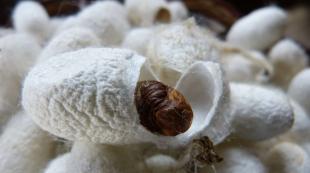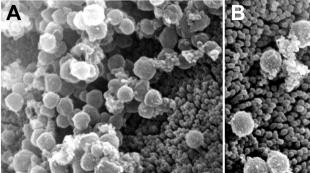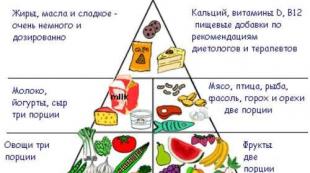Complications during tooth extraction - dislocation and fracture of the lower jaw. Complications during tooth extraction - dislocation and fracture of the lower jaw Treatment of a fracture of the alveolar process
- violation of the integrity of the alveolar part of the bone. Patients complain of severe pain in the area of the damaged jaw, increased pain when closing teeth, swallowing. During the examination, abrasions, wounds in the perioral region are revealed. The mucous membrane of the oral cavity is edematous with signs of bruised and torn injuries. The diagnosis of "fracture of the alveolar process" is made on the basis of the patient's complaints, clinical examination data, and radiography results. Treatment of a fracture of the alveolar process consists in the surgical treatment of damaged areas, reposition, fixation of the broken fragment, and immobilization of the bone.

General information
Fracture of the alveolar process - damage with a complete or partial violation of the integrity of the anatomical part of the bone of the upper (lower) jaw, bearing teeth. In dentistry, a fracture of the alveolar process of the upper jaw is much more common than the lower. This is due not only to the structural features of the bone tissue, but also to the ratio of the jaws to each other. The compact plates of the upper jaw are thinner. In addition, with an orthognathic bite, the upper incisors overlap the lower teeth, protecting them from injury.
The front teeth of the upper jaw themselves are open upon impact. It is on them that the maximum traumatic force is accounted for. Fractures of the alveolar process, combined with a violation of the integrity of the apical third of the roots, are rarely diagnosed. In children, fractures of the alveolar process are most often detected at the age of 5 to 7 years, due to the presence of follicles of permanent teeth in the bone. Distal occlusion in combination with the vestibular position of the upper incisors increases the risk of injury to the alveolar process.

Causes
The main causes of fractures of the alveolar process include injuries, blows, falls from a height. Osteomyelitis, fibrous osteitis, malignant neoplasms, radicular cysts lead to a weakening of the bone structure, as a result of which a fracture of the alveolar process can occur even when exposed to small forces. The nature of the displacement of damaged fragments is affected by muscle traction, the area of the fragment, and the kinetic energy of impact. If the line of application of force passes in the sagittal plane, the anterior fragment, formed as a result of a fracture of the alveolar process, is displaced into the oral cavity. In case of violation of the integrity of the lateral part of the jaw, the movable fragment moves in the direction of the midline and inward.
In patients with deep occlusion and absence of posterior teeth, damage inflicted from below to the chin area leads to an anterior displacement of the anterior part of the upper jaw, the kinetic energy of the blow is transferred to the bone tissue through the lower incisors. A fracture of the alveolar process in the area of the molars occurs as a result of injury by a narrow object to the zone located between the lower jaw and the zygomatic arch. The anatomical structures that protect the alveolar process of the upper jaw from fracture include the nasal cartilage, zygomatic arch and bone. The lower jaw is reinforced with a chin tubercle and oblique lines.
Classification
There are the following types of fractures of the alveolar process:
- partial fracture. On the radiograph, a violation of the integrity of only the outer compact plate is determined.
- incomplete fracture. Damage to all layers of bone tissue is diagnosed. No fragment offset.
- Complete fracture. When deciphering the radiograph, an arcuate enlightenment of the bone tissue is revealed (two vertical lines are connected by a horizontal one).
- Comminuted fracture. Consists of several fragments intersecting in different directions.
- Fracture with bone defect. There is a complete detachment of the damaged area of bone tissue.
Fractures of the alveolar process are also divided into fractures without displacement and with displacement.
Symptoms
With a fracture of the alveolar process, patients complain of intense spontaneous pain, which increases when trying to close their teeth. Swallowing saliva is also accompanied by soreness. In patients with a fracture of the alveolar process, the mouth is half open. In the tissues of the perioral region, single or multiple abrasions and wounds are detected. Against the background of edematous oral mucosa, bruised-torn lesions are diagnosed. In case of a fracture of the alveolar process with a displacement, under the bleeding mucous membrane, there is an edge of a broken bone section.
As a result of hemorrhage, the transitional fold is smoothed out. The bite in patients is disturbed due to the displacement of the broken fragment. When closing, occlusal contact is determined only on the cutting edges and chewing surfaces of the teeth of the damaged area. The teeth are mobile, vertical percussion is positive. With an incomplete fracture of the alveolar process, the cause of the violation of occlusion is complete or impacted dislocations of the teeth. With a fracture of the alveolar process, bleeding from a laceration of the mucosa or dentogingival junction is often diagnosed. In childhood, a damaged displaced fragment of the alveolar process may contain the rudiments of permanent teeth, which subsequently leads to their death.
Diagnostics
Diagnosis of a fracture of the alveolar process includes the collection of complaints, physical examination, x-ray examination. During a clinical examination, a dentist reveals swelling of soft tissues, a violation of the integrity of the skin of the oral zone. Opening the mouth is difficult. Bruised and lacerated wounds are determined on the red border of the lips, as well as on the oral mucosa. The bite is broken. There may be complete and partial dislocations of the teeth, accompanied by bleeding. Pathological mobility of the teeth of the damaged bone fragment is noted. Vertical percussion of the teeth of the displaced area, as well as those that border the fracture line, is positive.
Palpation examination for a fracture of the alveolar process is highly informative. Due to the detection of mobile points during the displacement of the damaged fragment in the sagittal and transversal planes, it is possible to clinically reproduce the fracture line. Pressure on the alveolar process is accompanied by pain. The load sign is positive. Decisive in the diagnosis of "fracture of the alveolar process" are the results of radiography. In patients with damage to the alveolar part, the image reveals a clearing of the bone tissue with uneven boundaries, shaped like an arch. Due to the denser structure of the bone tissue, the fracture of the alveolar process of the lower jaw has clearer contours. When performing computed tomography, along with a violation of the integrity of the bone, it is possible to determine the location of the wound channel in the soft tissues, the presence and exact localization of the hematoma.
A fracture of the alveolar process must be differentiated from soft tissue injuries and other fractures of the bones of the maxillofacial region. The clinical examination is performed by an oral surgeon.
Treatment
Treatment of a fracture of the alveolar process includes the elimination of pain, antiseptic treatment of damaged tissues, manual reposition of fragments, and immobilization. For the purpose of anesthesia, conduction anesthesia is performed. In case of a fracture of the alveolar process with a displacement, a revision of the wound is made, the sharp edges of the bone are smoothed and the mucous membrane is tightly sutured or the bone wound is closed with an iodoform bandage.
The displaced fragment is set in the correct position under the control of occlusal relationships. For immobilization, a smooth brace made of aluminum wire is most often used. It is bent from the buccal surface of the teeth. Provided that there are no destructive periapical changes in the bone tissue and pathological mobility of the teeth of the intact area, the splint is fixed to 3 teeth on both sides of the fracture line of the alveolar process. The single-jaw brace is placed with adhesive systems and a light-curing composite material or with metal ligatures, which must be changed every week.
If, when the alveolar process is fractured, there is only one support for fixing the splint in the area of the molars, the number of stable teeth is increased to 5. To achieve more stable immobilization, a chin sling is used. In the case of an impacted dislocation of the anterior part of the upper jaw, a single-jaw steel bracket is used, which is tied with ligatures to healthy teeth. The displaced fragment is connected to the tire with elastic bands. If there are no teeth in the supporting areas during a fracture of the alveolar process, a splint is made of quick-hardening plastic. In the first days, antibiotic therapy, hypothermia are prescribed. Herbal decoctions, preparations based on chlorhexidine bigluconate are used as preparations for antiseptic treatment.
Forecast
If the roots of the teeth are not in the line of fracture of the alveolar process, the prognosis is favorable. Simultaneous reposition and immobilization make it possible to achieve callus formation within 8 weeks. With late treatment of patients, the treatment time is lengthened, the list of drugs for anti-inflammatory and antibacterial therapy is expanding, osteosynthesis options are narrowing, and the risks of post-traumatic osteomyelitis and false joint development are increasing. To reduce stiff fragments, additional devices for extraoral and intraoral traction are used.
If, along with a fracture of the alveolar part, a violation of the integrity of the roots of the teeth is diagnosed, the prognosis is unfavorable. Consolidation is not achieved in most cases. As a result of violations of innervation and trophism, sequestration and rejection of the broken fragment is observed.
Isolated fractures of the alveolar process occur under the action of a traumatic force on a rather narrow section of it. The alveolar process of the upper jaw is more prone to fracture compared to the alveolar part of the lower jaw. The anterior section of the alveolar process of the upper jaw breaks mainly, which is associated with anatomical features (Fig. 99, a). The upper jaw, as a rule, somewhat overlaps the lower one; its alveolar process is longer and thinner. The anterior section of the alveolar process of the upper jaw is not protected by anything, except for the elastic cartilaginous section of the nose. Its lateral sections are covered by the zygomatic arch. The frontal section of the alveolar part of the lower jaw is sufficiently reliably protected by the anteriorly protruding upper alveolar process and teeth, the chin, its lateral sections - by the corresponding section of the body of the lower jaw and the zygomatic arch.
Fragment of the alveolar process is displaced in cavity mouth under the influence of the ongoing action of the applied force: posteriorly - in the frontal section and inwards - in the lateral. Displacement sometimes so much, what a broken fragment can lie on a hard sky. On the upper jaw, it can move outward, when the impact on alveolar process indirectly through the teeth lower jaw. It matches like usually with its fracture.
The fracture line runs through the entire thickness of the alveolar process, extremely rarely - only through the outer compact record and spongy substance without damage to the internal plates. broken off plot more often maintains contact with the periosteum and mucous membrane of the oral cavity, less often there is a separation his. fracture alveolar process is often accompanied by fracture or dislocation of teeth (Fig. 99, b).
break line more often has an arched shape, especially on the upper jaw, which is associated with unequal level standing root tips teeth. She can be located outside tooth roots, what creates favorable background For engraftment fragment, or pass through the roots of the teeth accompanied by fracture. In this case conditions for engraftment of a fragment bad and favorable treatment outcome doubtful. With a lateral fracture
the alveolar process of the upper jaw often breaks off the bottom of the maxillary sinus.
Sick present complaints of spontaneous pain in upper or lower jaw, intensifying when closing teeth or trying chewing food, improper closure teeth or inability to close your mouth.
With external Examination reveals marked soft tissue edema mouth area or cheeks, bruising, abrasions, wounds is sign previous injury. The mouth is half open.
When examining the oral cavity on the mucous membrane of the lips or cheeks, there may be hemorrhages, torn wounds due to damage to the teeth. When the fragment is displaced, a rupture of the mucous membrane of the alveolar process occurs with exposure of the bone tissue along the fracture line. The configuration of the dental arch is broken, the bite is wrong. If there is no clinical displacement of the fragment, the fracture line can be "determined by carefully displacing the alleged fragment and palpation determining its mobility under the fingers of the other hand. By moving the finger along the border of the movable bone fragment, it is possible to accurately determine the size of the broken portion of the alveolar process.
Percussion of the teeth between which the fracture line passes is usually painful. Fragmented teeth can also respond to percussion and be mobile.
On the intraoral radiograph, the fracture line and its relationship with the roots of the teeth are clearly visible.
Treatment. Under conduction (rarely infiltration) anesthesia, it is necessary to set the fragment in the correct position under bite control. It can be immobilized using a smooth bus-bracket, if there are a sufficient number of stable teeth on the broken and undamaged area of the alveolar process.
In the case of a central location of a fragment in an intact area, the splint should include at least 2-3 stable teeth. When a fragment of the upper jaw is displaced downward, it is advisable to fix the teeth to the wire splint with a special loop passing through the cutting edge or their chewing surface. The method of choice in such cases is the kappa splint made of quick hardening plastic. It is obligatory to control the viability of the pulp of the teeth located on the fragment. With pulp necrosis, which is established by repeated monitoring of electrometry, the teeth should be trepanned, and their channels should be sealed after appropriate processing. If anatomical conditions do not allow the use of a smooth brace splint, a tooth-gingival (supragingival) splint can be made on the broken area and fixed with a polyamide suture to the intact area of the alveolar process.
If it fails install a fragment but the correct hand position, then the tire must be bent so that was stretch it with rubber rings. On intact alveolar process bend in accordance with the stated requirements. Line segment tires, located in the projection of the displaced fragment, should be represented by an arc (on which be bent toe hooks) For fixing rubber rings, attached with a ligature to the teeth on broken area. After fragment reposition it is fixed in the correct position with a smooth brace or kappa splint.
Tire can withdraw after 5-7 weeks When detaching a section alveolar offshoot sharp bone ledges smooth with a cutter, 2
the mucous membrane after its mobilization over the bone wound is sutured tightly with catgut. If it is not possible to suture the wound, it is closed with a swab of iodoform gauze, which is changed no earlier than on the 7-8th day.
– the process when the integrity of the alveolar bone part is violated.
Fractures occur due to mechanical trauma:
- a powerful blow from the fist to the face;
- hitting the jaw area with a stone or other heavy object;
- hitting your face against a wall or falling;
- accident at work or in transport.
A fracture is diagnosed in the frontal part, an injury to the process is accompanied by a fracture and dislocation of the walls of the maxillary sinus. The fracture involves the neck of the condylar process, which is located at the angle of the jaw and between the incisors.
Fracture of the alveolar process and its types
The fracture of the additional support is divided into five types:
- Incomplete. It is a gap that passes through the entire alveolar process, thereby touching the bone crossbars and compact plates. Fragments do not move.
- Partial. The trauma hole touches the additional support from the outside. The compact plate breaks on the outside in the area of the hole and two, three painters, as well as partitions that are between the teeth. Fragments do not move.
- Full . The fracture is completely included in the entire alveolar process.
- splintered. The fracture foramens cross in 2-3 lines.
- Bone defect. The broken part comes off completely.
Fracture symptoms
The patient begins to bleed from the mouth. The pain has a paroxysmal character, which appears both above and below the jaw.
The pain syndrome may intensify when the patient closes his teeth during chewing. The inner shell and tissues of the oral cavity swell, this is noticeable in the cheek area. The patient cannot close his jaw and his mouth is always in a half-open state. Blood streaks can be seen in saliva secretions. The inner shell of the cheeks or lips is covered with lacerations.
Hemorrhage is possible if soft tissues are damaged by painters during an injury. If the fragment is displaced, then the inner shell of the alveolar process is torn. When the jaw closes, only those teeth that have shifted in the area of the alveolar process are in contact.
With the help of x-rays, specialists can diagnose the deviation. A fracture of the alveolar process of the upper jaw looks like an enlightened area with fuzzy and intermittent edges. The fracture of the alveolar process of the lower jaw has a clearer border, this is due to the fact that it is anatomically different from the lower jaw.

Diagnosis of a fracture of the alveolar process
To diagnose fractures of the alveolar processes, specialists study all the patient's complaints. Then a complex of medical diagnostic measures is carried out and an x-ray is prescribed.
With the help of clinical examinations, the dentist determines how swollen the soft tissues are, whether the integrity of the skin is broken.
The specialist makes a diagnosis on the basis of:
- it is difficult for the patient to open his mouth;
- the red border of the lips and the oral mucosa is injured (bruises and lacerations are noticeable);
- if you ask the patient to close the jaw, it is clear that the relationship of the dentition is broken;
- outwardly visible complete or partial dislocation of the incisors;
- salivation with bruising;
- the damaged fragment of the bone has pathological mobility of the molars;
Palpation examination is considered effective in making a diagnosis. To determine the fracture line, the dentist needs to find moving points during displacement. If you press on the alveolar process, the patient will experience acute pain. The sign of the load is positive.
To make a diagnosis, the patient needs to take an x-ray of the jaw.
If the picture shows enlightenment in the tissues of the bone, which have fuzzy boundaries (looks like an arch), this means that the alveolar process is injured. Due to the fact that the bone tissue of the lower jaw is denser in structure, the fracture in the region of the alveolar process has pronounced boundaries.
To see where the wound channel and soft tissue hematoma are located, the patient is prescribed computed tomography.
Electroodontodiagnostics is prescribed to determine the state of the loose fibrous connective tissue of the tooth in the injured area. Patients undergo diagnostic examination several times.
Fractures of the alveolar processes are differentiated with trauma to the pulp and other bruises of the jaw. Clinical research is carried out by a maxillofacial surgeon.

Treatment of patients diagnosed with a fracture of the alveolar process
Patients diagnosed with a fracture of the alveolar process are not all treated inpatients. The severity of the injury plays an important role.
When the direction of the fracture is above the top of the painter, then manual reduction is prescribed by specialists. It lies in the fact that the bone fragment, together with the painters, is fixed with a single-jaw, intraoral bandage.
When the direction of the fracture is within the tooth root, then the incisors that are dislocated and have a broken root are removed entirely. The incisors are removed because their sockets are completely destroyed, and the root fracture line is greatly displaced, and no matter how hard the specialists try, it is impossible to save the tooth. Then the process and teeth are repositioned, which remained intact. They are fixed with tires.
If the germ of a permanent visible tooth is damaged, but not dislocated, then it can be saved due to the fact that it is strong. In case of a serious fracture of the additional support holding the dentition, specialists prescribe the removal of injured permanent incisors. The incisors are removed with additional support.
When removed, the bone wound is closed with an inner shell and a connecting film. After the operation, the additional support will not be able to take root, precisely because the connective film and soft tissues have been torn.
In previous articles about complications that occur during and after tooth extraction, we found out that dentists quite often face various problems during the extraction operation. In this article, we will look at complications during tooth extraction, such as fracture of the alveolar process of the jaw, dislocation and fracture of the mandible, and aspiration.
Fracture of the alveolar process of the jaw
A fracture of the alveolar process of the jaw can occur both through the fault of the doctor (rough work, violation of the removal technique), and due to the pathological process (soldering of the tooth with the wall of the alveolus).
Types of fracture of the alveolar part of the jaw:
fracture within the alveoli of the removed tooth;
a fracture within the periodontium of several teeth;
fracture of the alveolar process, extending beyond the dentition (fracture of the tubercle of the upper jaw).
Reasons for fracture:
Compression of the bone during fixation of the forceps.
Too active dislocation, which leads to kinking and breaking off of the alveolar wall.
Pathological processes leading to a decrease in bone strength (cysts, tumors, osteomyelitis).
Osteoid type of articulation.
Diagnosis of a fracture of the alveolar process of the jaw
Diagnosis of a fracture of the alveolar process of the jaw is based on the nature of complaints, anamnesis of the disease, examination and X-ray examination.
Sometimes during the occurrence of a fracture, you can hear a characteristic sound - crackling.
With a fracture of the alveolar process of the upper jaw, along with the tubercle, quite severe bleeding from the venous plexus may occur.
Symptoms:
the appearance of foamy blood in the wound;
the passage of a jet of air into the mouth during an increase in pressure in the nasal cavity (oronasal test);
the appearance of blood from the nasal passage on the side of the lesion.


Treatment of a fracture of the alveolar process of the jaw
If a fragment of the alveolar process retains its connection with soft tissues, then it is fixed with a metal splint. Otherwise, the fragment is removed, sharp edges are smoothed. After that, an osteotropic biological preparation can be introduced into the alveolus, the edges of the gums can be brought together with sutures.

Fracture of the lower jaw
Mandibular fracture occurs most often during the extraction of molars with an elevator or chisel. The use of a chisel and hammer to “gouge” a tooth or root, which was recommended earlier, makes the risk of such a complication real. Therefore, a chisel should not be used to extract teeth. Less traumatic and more effective is the use of an electric drill with rotating cutting tools (burs, cutters).

A fracture can be considered pathological if an inflammatory disease is found in the anamnesis - cysts, tumors, tooth retention, osteomyelitis. Such pathological conditions lead to a decrease in strength, which in turn is a risk factor for fracture.
In the event of a pathological fracture during tooth extraction, it is necessary to carry out transport immobilization of the lower jaw with a chin-parietal bandage and send the patient to the maxillofacial hospital.
A jaw fracture that occurs during tooth extraction is not always immediately recognizable. After surgery, the patient may complain of pain in the jaw, difficulty opening the mouth and chewing. Careful clinical examination and x-ray can establish the presence of a fracture.

Dislocation of the lower jaw
With a wide opening of the mouth during anesthesia and tooth extraction, a dislocation of the lower jaw can occur. This complication is more common in patients with habitual dislocation. The occurrence of dislocation can contribute to the relaxation of the masticatory muscles under the influence of conduction anesthesia.

Clinic and diagnosis of dislocation of the lower jaw
The clinic and diagnosis of dislocation of the lower jaw is based on the patient's complaints, clinical examination. The main complaint is pain in the anterior region and the inability to close the teeth. Pain in patients with habitual dislocation may be moderate, as well as in patients who have undergone conduction anesthesia.
Clinical manifestations: the patient cannot close his mouth, with unilateral dislocation, the jaw is displaced to the healthy side, with bilateral dislocation - forward.

Characteristic of the dislocation is a symptom of elastic mobility. The doctor, having captured the lower jaw from both sides with his index and thumb fingers, makes an attempt to set it in the position of central occlusion. To some extent, this succeeds, but as soon as you stop holding the lower jaw, it returns to its original position.

Dislocation of the temporomandibular joint a - anterior b - posterior

Treatment of dislocation of the lower jaw
We complete the extraction of the tooth and then we treat the dislocation of the lower jaw.
First way. The chair is lowered, its back is set vertically. The patient rests his head on the headrest and fixes his hands on the armrests. The doctor stands in front of the patient, wraps the thumbs of the right and left hands with gauze napkins or a towel. Then he grabs the lower jaw with both hands so that the thumbs lie on the chewing surface of the molars, and the rest cover the lower edge of the jaw. After that, the doctor strongly presses with his thumbs on the molars, moving the lower jaw down. Without stopping to press the lower jaw down, the doctor moves it backwards. The sound of a click and the disappearance of the symptom of elastic fixation indicates that the dislocation has been eliminated. Having warned the patient about the possibility of a recurrence of dislocation with a wide opening of the mouth, the doctor imposes a chin-parietal bandage on the patient to limit the opening of the mouth. The bandage is recommended to be worn for 5-6 days.

The second way. The patient is seated in a chair in the same position. The doctor stands in front of the patient, inserts the index fingers of the right and left hands into the vestibule of the mouth and moves them along the front edge of the branch as far as possible upwards, to the top of the coronoid process. Then the doctor sharply and strongly presses on the anterior edge of the coronoid process. The essence of the method lies in the fact that, having felt pain in the area of the anterior edge of the coronoid process, the patient tries to avoid it by eliminating the pressure of the doctor's fingers. He cannot move his head and the whole body backwards, since they rest against the back and headrest of the chair. Therefore, subconsciously, he tries to move the lower jaw down and backwards, i.e. carry out the movement of the lower jaw, which is necessary to eliminate the dislocation. In this case, the doctor does not have to overcome the force of contraction of the masticatory muscles, as is done when using the first method to reduce the dislocation.
Aspiration
Another complication that can occur during tooth extraction is aspiration.
Aspiration is the entry of foreign bodies into the airways during inhalation. During the operation of tooth extraction, there are cases of aspiration of the tooth, parts of the tooth, needles, cotton swabs, burs.
The occurrence of aspiration is facilitated by a decrease in the gag reflex after anesthesia and the position of the patient in the chair, the operating table with the head thrown back. The foreign body can be located above the vocal cords, in the larynx, in the trachea and bronchi.
Aspiration clinic
Clinical signs of aspiration: sudden barking cough, pronounced shortness of breath, cyanosis of the skin, lips and oral mucosa, restlessness and "disappearance" of the removed tooth, its part or instrument.

Urgent Care. The patient is transferred to a sitting position with the torso tilted forward and down, they are offered to “clear their throats”. In between bouts of coughing, examine and palpate the oropharynx, pulling the tongue forward. If a foreign body is found in the oropharynx, it is removed with tweezers or a finger.
If a foreign body is not found in the oropharynx, and signs of asphyxia (suffocation) are growing, one can think about the presence of a foreign body in the laryngopharynx or larynx. In such a situation, one of the staff of the medical institution calls the resuscitation team by phone, prepares everything necessary for a tracheotomy. The doctor, meanwhile, seated the patient on a stool and standing behind, wraps his arms around his chest. Then he sharply squeezes the chest, lifting the patient, thereby forcing exhalation. He repeats this method of artificial respiration several times. If these resuscitation measures do not help, asphyxia increases, a tracheotomy is performed.

Aspiration prevention
Prevention of aspiration consists of the following measures: careful use of small instruments, checking the fixation of the needle on the syringe, careful removal technique. If any fragments of the tooth disappear, it is necessary to examine the oral cavity and, if a foreign body is found, remove it.
If small instruments, teeth, their fragments get into the oral cavity, the patient should be asked to lean forward and spit the contents of the oral cavity into a spittoon, rinse the mouth with water and spit again.
Complications During Tooth Extraction - Dislocation And Fracture Of The Mandible updated: June 5, 2018 by: Valeria Zelinskaya
Fractures of the processes of the upper jaw
Fractures of the alveolar process of the upper jaw arise from the direct and indirect action of force on the alveolar arch. With indirect action, the impact force is transmitted from the lower jaw, and here the position of the lower jaw dentition in relation to the upper row at the moment of impact plays an important role. With a complete coincidence of the dentition, comminuted fractures of the teeth can occur; in case of mismatch - fractures of the right or left side of the alveolar arch.
Fractures of the anterior and lateral segments of the alveolar process occur from the direct action of force on the alveolar arch or a row of teeth, as well as from the indirect one - through the lower jaw when falling on the chin. They are often accompanied by a simultaneous fracture of the body of the lower jaw. The fracture line here, more often than with fractures of the lower jaw, goes beyond the alveolar process, forming an arcuate fracture (Fig. 57).
This is explained by the fact that the alveolar process of the upper jaw is more closely connected with its body and the roots of the teeth do not lie at the same level, but often go above the level of the arch of the hard palate, for example, the roots of the frontal teeth. Quite often the fracture line passes into the area of the bottom of the maxillary cavity.
With gunshot fractures, damage to the alveolar process is not limited to a fracture on one side; often it is bilateral and is accompanied by damage to the teeth, opening of the jaw cavity and fracture of the hard palate.
In addition to comminuted fractures, detachments of a larger or smaller part of the alveolar arch with extensive soft tissue damage are also observed here.
The displacement of fragments takes place along the horizontal and vertical planes, depending on the direction of the acting force. It is often accompanied by mucosal tears or extensive bruising of surrounding tissues.
In fresh cases, the reduction of fragments of the anterior part of the arch is easily possible, since they are held in the wrong position solely due to a slight tension of the soft tissues; but with lateral fractures, reduction and correct fixation of fragments is not always easy.
In chronic cases, the development of connective tissue is already a significant obstacle to the reduction of fragments.
Treatment of fractures of the alveolar process of the upper jaw consists in the reduction and fixation of the displaced fragment. The reduction is performed using pressure with the fingers, followed by fixation with a wire arc made of soft aluminum wire. In later and more difficult cases, an elastic wire arc is used, with the help of which, depending on the case, it is possible to move the fragment inward or move it outward. The arc is bent from steel or elastic bronze-aluminum wire. In case of fractures of the anterior alveolar arch with displacement of the fragment posteriorly, a strong arch (1.5 mm thick) is attached to healthy molars on both sides using bends, bandage rings described below, and loops of thin ligature wire twisting on individual teeth. The front end of the arch protrudes somewhat forward compared to the normal position of the dentition in the horizontal plane. The entire fragment is pulled to the arch by the teeth with the help of elastic rubber rings or by twisting wire ligatures (Fig. 58).

In case of fragmentation involving the posterior lateral section of the arch, reduction is achieved using an elastic wire arch. It attaches on the healthy side; from the diseased side to the free end of the arc, laid outward, the fragment is pulled by the teeth with wire ligatures or the end of the arc is inserted into the cannula of the ring, which is fixed on the last tooth of the fragment (Fig. 59).

With a rather rare outward displacement of the fragment, the same springy arc at the free end is bent inward and the teeth of the movable fragment are attached to its end. The end part of the arc should put pressure on the fragment from the outside and shift the fragment inward. For greater effect, stronger and wider rubber rings are pulled between the ends of the arc from the inside, across the palatal vault; they are strengthened behind the arc between the free dental spaces or directly to the teeth (Fig. 60).

In chronic cases, there is not enough rubber traction, and it is necessary to use a double-sided screw to bring the fragments closer together or apart.
With fragments that have fallen down, an ordinary wire arc is applied with protrusions in the form of a bracket upwards. To the last, rubber rings are pulled, fixed at the base of the teeth; in order to avoid inclination of the teeth outward, another arc is placed under this arc, pushing the teeth inwards (Fig. 61).

Treatment of soft tissue injuries consists in mechanical cleaning of the wound and oral cavity; if necessary - in suturing the mucous membrane and the skin.
When crushing and exposing bones from the periosteum, it is necessary to very carefully remove fragments, even those that are weakly associated with the periosteum. All of them can take root, at least with partial sequestration; only completely free fragments are removed; loosened teeth are retained if possible, as they can serve to strengthen the tire; besides, they can. strengthen with the development of bone from the periosteum; only dislocated teeth in the area of the bone gap are removed if they interfere with reduction.
When a larger or smaller part of the alveolar process is torn off, the wound is plugged with iodoform or vioform gauze to prevent the buccal mucosa from adhering to the bottom of the wound. The exposed bone surfaces are covered with a shifted mucosa, which is sutured.
In case of injury and suppuration of the maxillary cavity, it is washed with hydrogen peroxide through the wound or through a specially made hole through the nose. Later, the communication of the oral cavity with the maxillary cavity must be closed plastically.
Healing and consolidation of a well-set fragment lasts 3-4 weeks if the surrounding tissues are not too crushed and infected and there is no infection of the bone gap. In these cases, healing is accompanied by the discharge of small sequesters and is delayed up to 6-8 weeks.
Gunshot fractures of the alveolar process are mostly accompanied by fragmentation of the process over a greater or lesser extent of the dentition or a fracture with a bone defect along with a defect in the corresponding teeth. With lateral penetrating wounds of the face, bilateral fractures are observed, and the entire alveolar process is separated from the upper jaw, being connected with it only by soft tissues. Fractures of the alveolar process are accompanied by damage to the cheeks, upper lip, ruptures of the mucous membrane; an attached infection sometimes entails suppuration of crushed soft tissues, detachment of the mucous membrane and periosteum, followed by sequestration of fragments, as a result of which a defect is formed. Often there is simultaneous damage to the lower wall of the maxillary cavity with a purulent complication. Sometimes, after healing, a rather wide fistula remains in the maxillary cavity.
Treatment of gunshot fractures of the alveolar process of the upper jaw in fresh cases consists in the treatment of an external wound, in the treatment of a wound of the mucous membrane; all loose fragments and teeth are removed, viable mucosal and periosteal flaps are sutured. If there is a hole in the maxillary cavity, it is left open in order to prevent sinusitis and is closed surgically only after the wound has healed.
In the presence of teeth on fragments and with preserved teeth behind the fragment, it is easily fixed with a wire splint; with springy fragments in the presence of teeth, treatment is carried out as with household fractures. When the entire fragment is torn off, it is set using an extraoral splint, which is pulled to the head plaster bandage or to a standard cap by horizontal side rods (whiskers).









